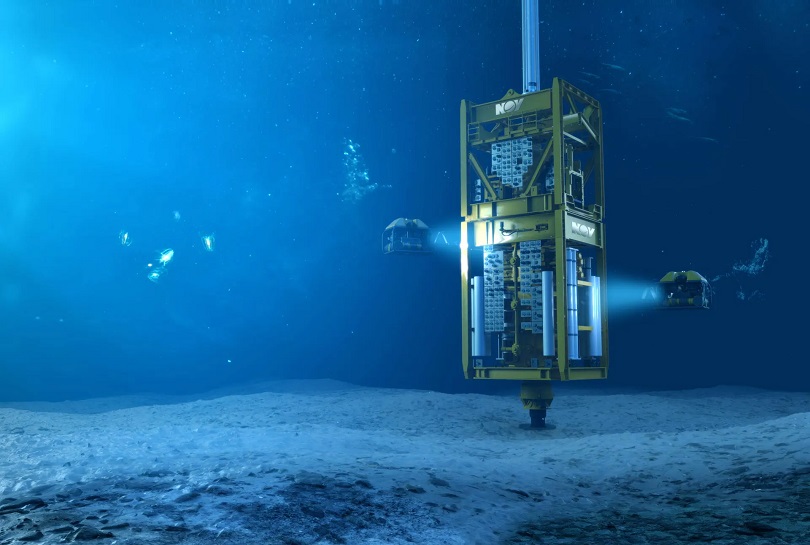In the high-stakes world of oil and gas exploration, managing well pressure and maintaining safety are critical concerns. One piece of equipment is central to controlling well blowouts: the blowout preventer (BOP). As drilling ventures into deeper, more hostile environments, BOPs play an increasingly pivotal role in ensuring safety and protecting lives, assets, and the environment.
A blowout occurs when reservoir pressure exceeds the containment ability of the drilling equipment, leading to an uncontrolled release of oil, gas, or other formation fluids from the wellbore. Historically, blowouts were feared incidents in the drilling industry, resulting in massive losses and disasters. Modern drilling rigs rely on blowout preventers to handle such pressure anomalies, serving as a last line of defense to prevent uncontrolled flows.
In this article, we will explore the function, design, and evolution of blowout preventers. We’ll also examine the technological advancements that are transforming BOP systems and their growing importance in offshore and deepwater drilling.
What is a Blowout Preventer?
A blowout preventer is a mechanical device used to seal, control, and monitor wellbore pressure during drilling operations. It is located at the top of the well, typically stacked in multiple layers in what’s known as a BOP stack. The device’s primary function is to control well pressure, thereby preventing the uncontrolled escape of fluids, which can result in a blowout. BOPs can be used both in onshore and offshore drilling and are mandatory safety equipment on every drilling rig.
The blowout preventer consists of various components, including rams and annular preventers, that can close around the drill pipe or shut the well entirely in the event of abnormal pressure conditions. BOPs are activated manually or automatically during emergencies, ensuring that the well remains under control even when kicks or sudden surges in pressure occur.
Why Are Blowout Preventers Essential?
Blowout preventers are indispensable to well control, a process of managing pressure within the well to prevent blowouts. When drilling through subsurface formations, operators frequently encounter different pressure zones. The drilling fluid, or mud, is used to maintain pressure balance, but sudden changes can overwhelm the mud’s capacity to control the well.
In cases where formation fluids flow into the wellbore — a phenomenon known as a kick — immediate action is required to prevent a blowout. The BOP is the tool that allows the operator to shut in the well, stopping the influx of formation fluids and giving the drilling crew time to stabilize the well. If a blowout occurs without a BOP in place, the results can be catastrophic, with potential loss of human life, environmental damage, and destruction of expensive equipment.
Historically, the oil and gas industry has seen several catastrophic blowouts, including the famous Deepwater Horizon incident in 2010, where the failure of the BOP system resulted in a massive oil spill. Incidents like this have highlighted the critical role of blowout preventers and driven increased attention to BOP technology and regulations.
Key Components of Blowout Preventers
The design of a blowout preventer is complex, incorporating several key components, each serving a specific role in controlling well pressure. These components, when working in conjunction, ensure that a well remains sealed off and manageable in any situation.
1. Rams
Ram blowout preventers are mechanical devices that feature moveable blocks (or “rams”) that can seal the wellbore by moving horizontally across it. There are several types of rams, each designed for specific well control scenarios:
Pipe Rams: These are designed to seal around the drill pipe, creating a tight fit while still allowing for well control.
Blind Rams: Used when there is no drill pipe in the wellbore, these rams close the well completely.
Shear Rams: These can cut through the drill pipe and seal the well in emergency situations where no other measure is effective. The shear rams act as a last line of defense, often cutting the pipe to close the well and prevent a blowout.
The ram system provides a robust mechanical barrier, essential for maintaining pressure control, particularly when other forms of sealing may not be adequate.
2. Annular Preventers
Annular blowout preventers use a rubber element that can expand and contract to seal around the drill pipe, casing, or even open holes. This flexibility makes the annular BOP highly versatile, capable of sealing off irregular shapes. The annular preventer can seal off the well at various stages of drilling, making it an essential part of the BOP stack. It is often used in combination with ram-type preventers, offering multiple layers of redundancy.
3. BOP Stack
A BOP stack is a combination of multiple blowout preventers and valves stacked on top of each other. This arrangement offers redundancy and versatility, allowing the operator to control different well scenarios. The stack usually includes both ram and annular BOPs, with each preventer serving a unique role in well control.
The BOP stack is positioned on top of the wellhead, and it can be activated either remotely from the drilling rig or, in subsea environments, from control centers located miles away from the wellhead. This setup is particularly important in deepwater drilling, where the distance between the rig and the wellhead may reach thousands of feet.
Blowout Preventer in Offshore and Subsea Drilling
Offshore drilling presents unique challenges for blowout preventer systems, particularly in deepwater or ultra-deepwater environments. In these scenarios, the BOP is placed on the seabed, often thousands of feet below the surface, and must be capable of functioning under extreme pressures and temperatures.
A subsea BOP is a specially designed system for offshore operations. It is installed on the wellhead at the seabed and controlled remotely by operators on the drilling rig or from onshore locations. Subsea BOPs must withstand immense pressures due to the depth at which they are deployed. These systems are also equipped with remote-operated vehicles (ROVs) and advanced monitoring tools to ensure that operators can intervene quickly if an emergency arises.
The Deepwater Horizon Incident and Lessons Learned
The 2010 Deepwater Horizon disaster remains one of the most tragic and instructive examples of a BOP failure. Located in the Gulf of Mexico, the Macondo well experienced a blowout after an unexpected surge of hydrocarbons overwhelmed the well’s control mechanisms. The BOP failed to shear the drill pipe and close the wellbore, allowing oil to spill into the ocean for months.
This incident highlighted the need for stricter regulations, better testing protocols, and technological advancements in blowout preventers. In response to the disaster, regulators such as the Bureau of Safety and Environmental Enforcement (BSEE) implemented new rules for BOP maintenance and functionality. Moreover, the oil and gas industry as a whole has sought to improve BOP design and ensure that shear rams, in particular, are capable of cutting through stronger, more resilient drill pipes.
BOP Maintenance, Testing, and Compliance
Given their critical role in ensuring well safety, blowout preventers are subject to rigorous testing and maintenance schedules. These procedures are designed to confirm that BOP systems will function as intended in emergency situations. Failure to adequately test or maintain a BOP can result in catastrophic blowouts, as seen in previous disasters.
Regular Pressure Testing
One of the most important forms of BOP testing is pressure testing, where the device is exposed to pressures greater than those expected during drilling. The goal is to ensure that the BOP can hold and control wellbore pressure without failure. This testing is typically conducted before and during drilling operations and is required by regulatory agencies.
Certification Standards
Blowout preventers are designed and manufactured according to strict industry standards. Organizations such as the American Petroleum Institute (API) provide detailed specifications for BOP design, performance, and maintenance. These standards help ensure that the BOPs used in the field are capable of handling high-pressure situations and that they meet the latest safety and reliability requirements.
Furthermore, compliance with local and international regulations, especially in offshore operations, is essential for BOP functionality. Governments and regulatory bodies regularly inspect BOP systems and conduct audits to ensure proper maintenance, certification, and operation.
The Future of Blowout Preventer Technology
As oil and gas exploration ventures into deeper, more extreme environments, the demand for advanced BOP systems continues to grow. New technologies are emerging to address the challenges of deepwater drilling and provide more reliable solutions for well control.
Automated BOP Systems
One of the most promising advancements in BOP technology is automation. Automated blowout preventers are equipped with sensors and monitoring systems that can detect pressure changes in real-time. In the event of an abnormal surge or kick, the automated system can activate the BOP without human intervention, ensuring faster response times and reducing the likelihood of a blowout.
Remote Monitoring and Control
Remote-operated BOP systems are also becoming more prevalent, particularly in subsea operations. Operators can monitor and control the BOP from onshore locations or other remote facilities, reducing the need for personnel to be present at the rig. This not only improves safety but also allows for more efficient management of BOP systems in hard-to-reach locations.
Enhanced Shear Ram Technology
Recent advancements in shear ram technology have focused on improving their ability to cut through larger, stronger drill pipes and other wellbore components. Enhanced shear rams provide a more reliable last-resort option for sealing the well in emergency situations, ensuring that the BOP can perform its intended function even in the most challenging conditions.
Conclusion
The blowout preventer is a cornerstone blowout preventer well control and safety in the oil and gas industry.As drilling operations move into more complex and high-pressure environments, the role of blowout preventers will continue to grow in importance. Through technological advancements and stringent safety practices, the industry is ensuring that BOPs remain a reliable line of defense in the prevention of oil and gas well blowouts.





